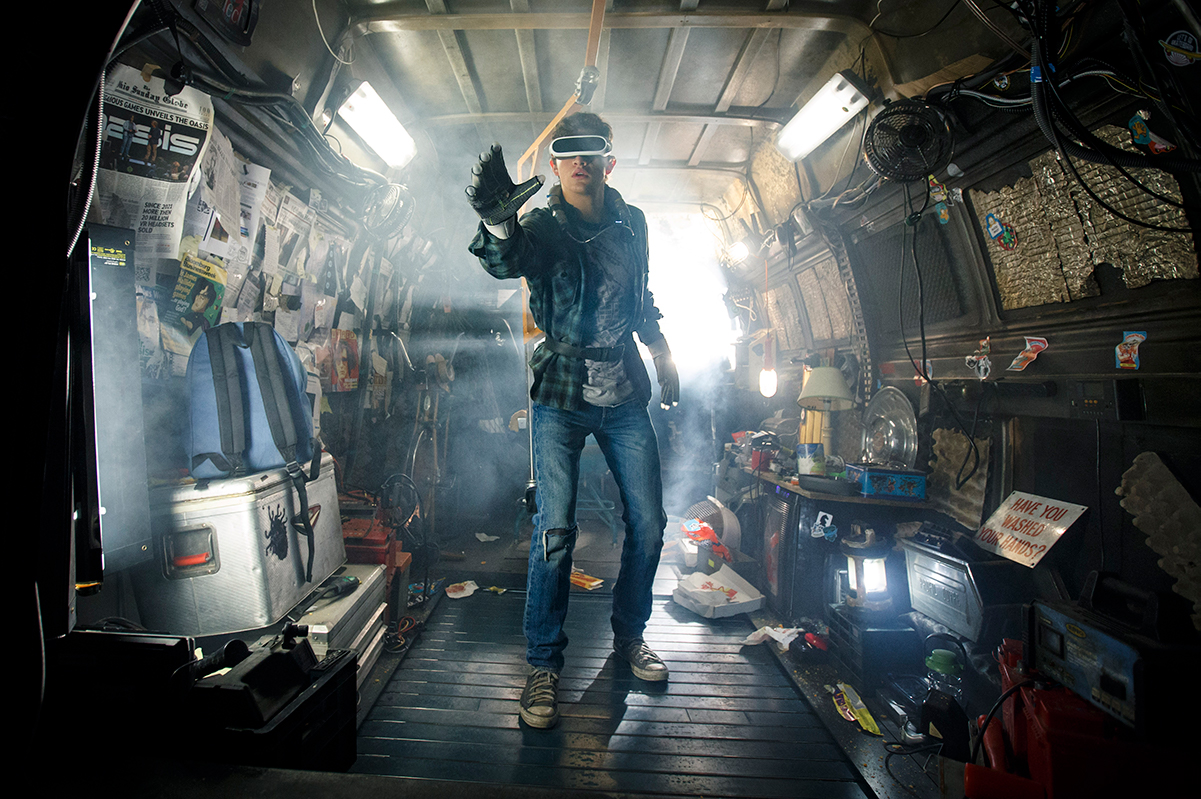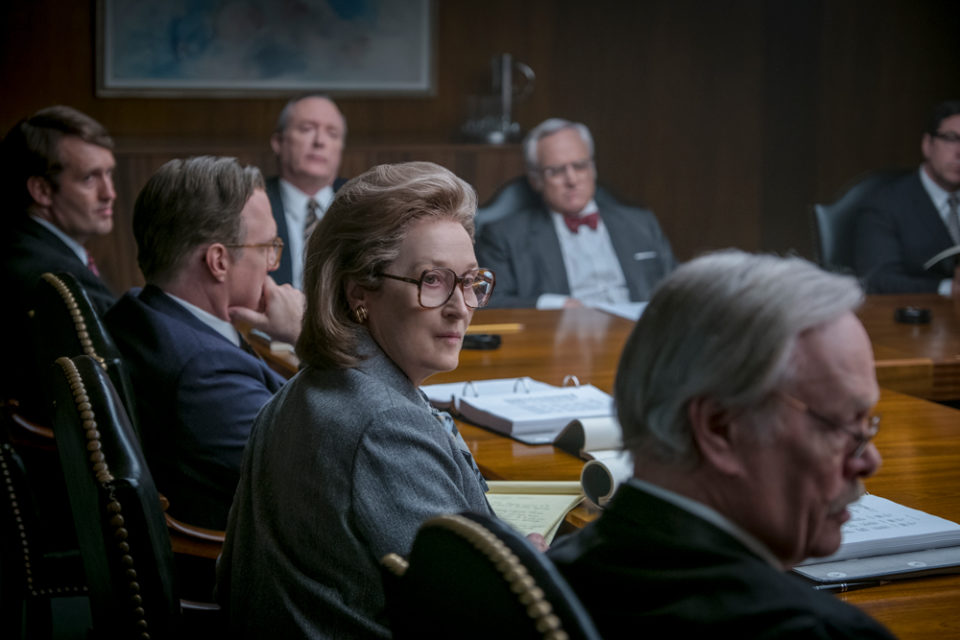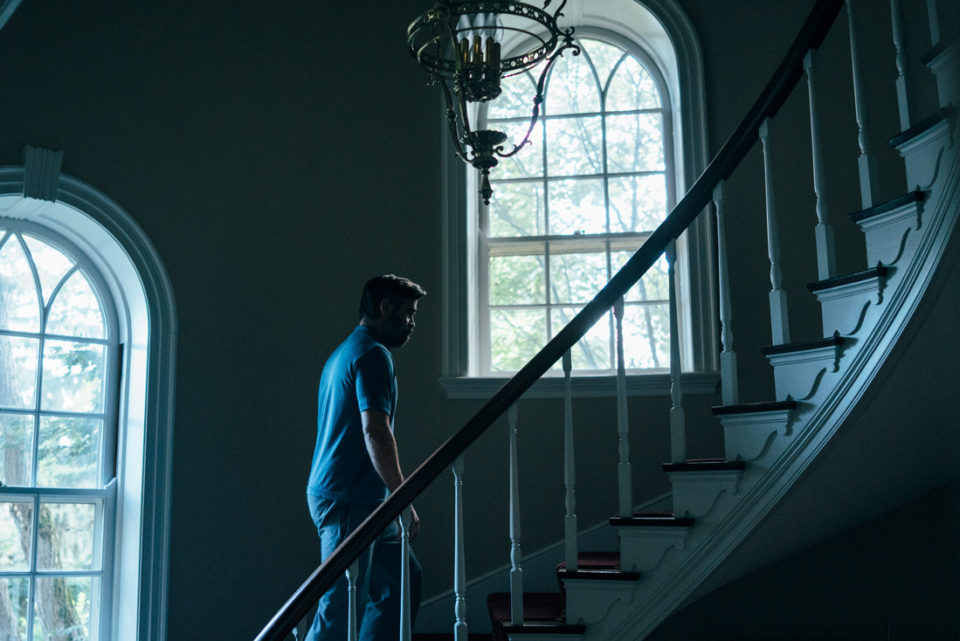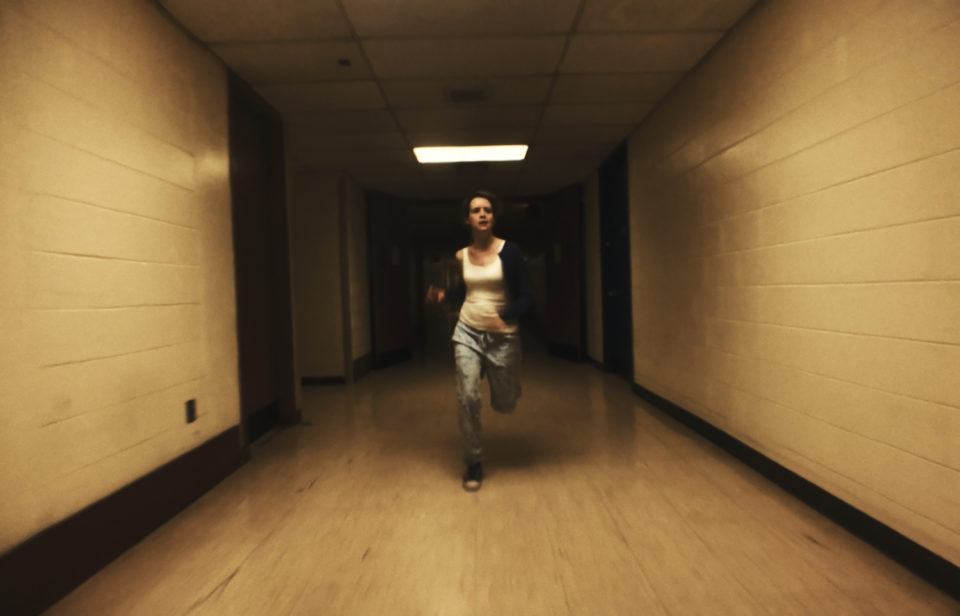“A fanboy can always tell a hater,” hero gamer Wade Watts spits at corporate goon Nolan Sorrento midway through Ready Player One. As far as declarations of principle go, it’s a far cry from the impassioned moral stance of Steven Spielberg’s previous film The Post (2017), or 2015’s Bridge of Spies.
The premise: teenager Watts (Tye Sheridan) is a contestant in a game to win control of an expansive virtual reality platform, the OASIS. Its late architect James Halliday has left it littered with a series of ‘Easter eggs’. The first player to decipher Halliday’s clues, beat hidden challenges, and collect all the eggs will win majority ownership of the platform.
To do this, the player must understand Halliday and the pop culture that shaped his youth – 1980s arcade games, cult film curios, and classic blockbusters like the Spielberg-produced Back to the Future. Watts, with his avatar Parzival (anime eyes and boy-band hair), is set to win, with his wonkish ability to recite obscure details of Halliday’s obsessions chapter and verse.
Nolan Sorrento (Ben Mendelsohn) attempts to recruit Watts to the side of his corporation IOI. To help him, Nolan has John Hughes trivia fed to him through an earpiece via a team of researchers. But fanboy Watts can sense a fake.
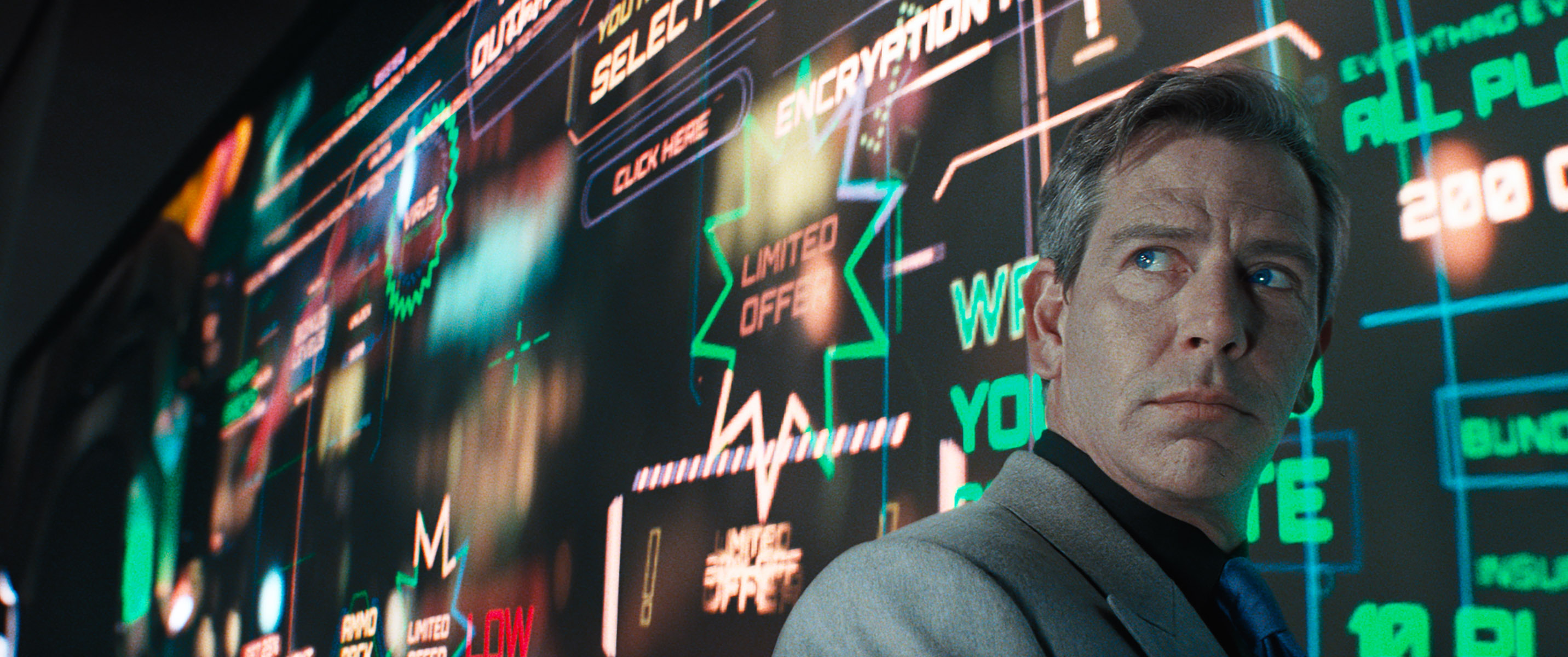
Ben Mendelsohn as corporate goon Nolan Sorrento. Image courtesy of Warner Bros. Pictures
Adapted from Ernest Cline’s 2011 novel of the same name, and with a screenplay by both Cline and Zak Penn, the film finds its raison d’être in its summoning of trivia. The OASIS is a pop culture mash-up, with Back to the Future’s DeLorean sharing a racetrack with the cherry red motorbike from Akira; where the T-Rex from Jurassic Park can muscle past King Kong; and the Iron Giant can battle MechaGodzilla. The film seems to expect each will inspire happy recognition in its viewers.
Superficial, fun and nostalgia-inducing, for sure. But also maybe a little self-referential and self-congratulatory? Meta-cinema as a directorial form of narcissism?
As a prime mover behind the very objects the film venerates, Spielberg’s recruitment onto the project seemed terribly on the nose. At age 71 it’s undeniable he has established a formal mastery while still retaining the aura of a boy wonder – here, Spielberg elevates the concept and still meets it on its own essentially juvenile level.
Working again in motion capture animation (2016 BFG and 2011 The Adventures of Tintin), Spielberg luxuriates in sweeping and acrobatic digital camera moves, and impossibly sustained spans of action. By cutting regularly back to the non-OASIS real world, he also keeps the film tethered to a sense of the actual.
Much of Spielberg’s sensibility through the 1980s and 1990s (as a director, and through his Amblin production company) is marked by a cheerfully materialist spirit; the gentle clutter of suburban homes denoting the prosperity of post-WW2 American capitalism.
In Back to the Future, when Marty McFly returns from the 1950s, having successfully mediated the courtship of his teenaged parents, he is rewarded with a new car. In Ready Player One, Watts’s private gaming cubby-hole, where he straps on the haptic gear that helps him explore OASIS, is in a sprawling heap of junked cars – an implicit acknowledgement of the lost promise of trickle-down Reaganomics; Spielberg’s middle-class suburbia is now a sprawling slum. In this grimly recognisable future, marked by towering stacks of trailer homes and hovering surveillance drones, where the populace has largely moved everyday life into the virtual sphere, prosperity is now virtual, too – players’ wealth is tied up in their OASIS avatars, and the indebted are forced to labour online for IOI.
The film presents all this as dystopic, but it doesn’t look closely enough at the weirdness of a world dominated by Halliday’s OASIS. It would seem the egg hunting is all good fun, even if the stakes are high. Viewers might wonder how the economic stability of an entire society could come to rest on a very advanced game of Mario Kart?
Watts’ intimate knowledge of Halliday’s pop culture obsessions marks him as a natural heir to OASIS’s founder. On one level it’s the strangest thing the narrative requires us to swallow. What business does a teenager in 2044 have with the fairly overlooked 1984 cult curio Buckaroo Banzai, apparently his favourite movie? Where are the teenagers today stanning for 1958’s Attack of the 50 Foot Woman?
Like a lot of science fiction films, Ready Player One has no sense of what culture looks like in the future, and so all its referents are of our recent past. Watts and Halliday’s cultural touchstones are mostly just those of the film’s authors. But in accepting this fiction the audience is obliged to see that in the world of the story pop culture has either not advanced since Halliday’s childhood, or largely regressed back to it, thanks to the founder’s inordinate influence over the society dominated by his platform.
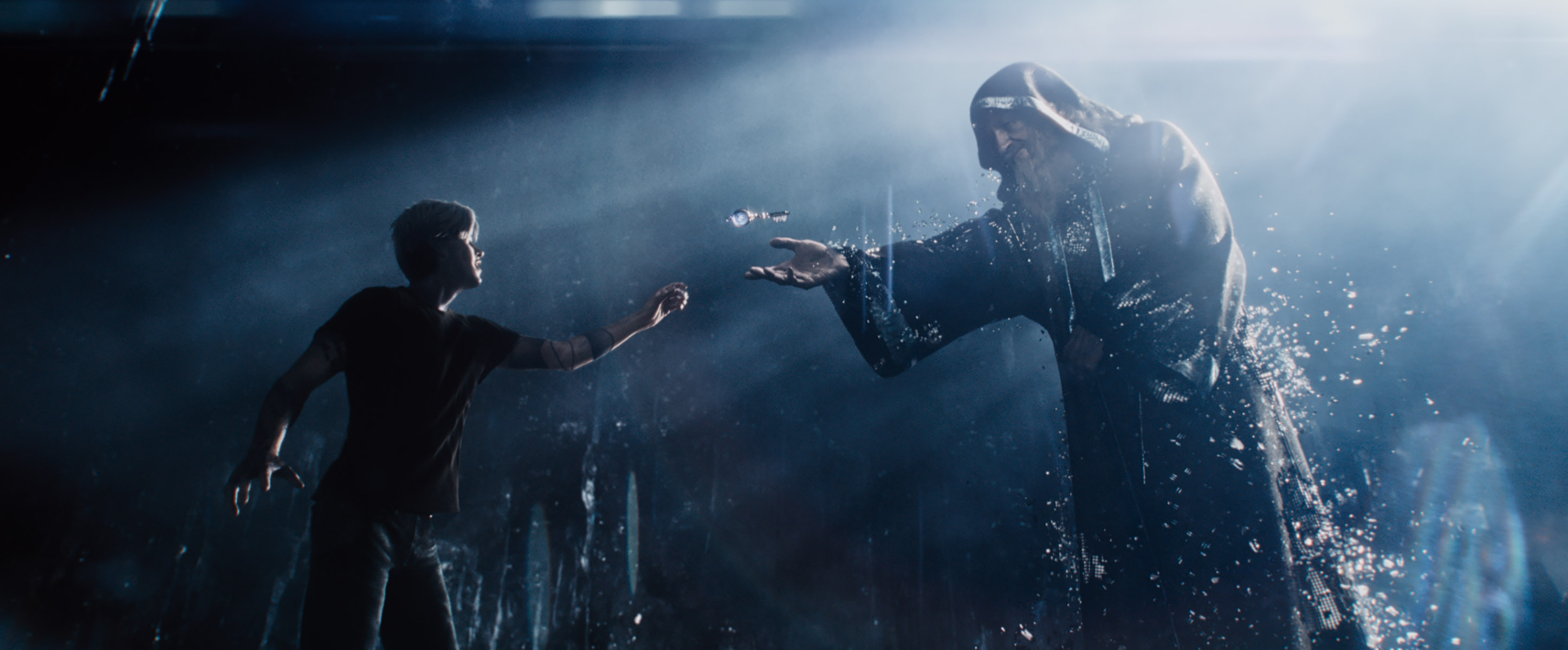
Image courtesy of Warner Bros. Pictures
Ready Player One wants its audience to know and feel the joy and companionship in shared cultural references. Trading nods to Akira, Buckaroo Banzai, The Iron Giant, and Future, Watts and his fellow gamers Samantha/Artemis (Olivia Cooke) and Aech (Lena Waithe) establish their compatibility and cement their friendships. Pop culture can be a lingua franca, as anyone who’s forged a conversation by exchanging, say, Simpsons quotes well knows.
But such connections are undeniably superficial, and though the film feints at recognising this – when Watts finally meets Samantha and Aech in person, neither are quite what he expects – its compulsive recitation of geek buzzwords, and dividing of society into fanboys and haters, tells us that it really is that shallow.
While the references accumulate – and as Watts delves deeper into the minutiae of Halliday’s life; the games he played, the films he saw – it begins to feel as though the film is telling us that a person’s identity can be indexed to a list of culture consumed.
As far as theories of the self go, this one is not particularly welcome appearing to us wrapped-up in a glossy package by an entertainment company intent on selling movie tickets. And disturbing, too, given that Watts’ self is really just a mirror image of Halliday’s, whose interests he has absorbed in order to game in the OASIS. Halliday’ OASIS is a shadow of other people’s creations, and its denizens are a shadow of him.
Perhaps the most dystopic idea in the film, one which it never really cares to address, is also, in the age of Facebook and other all-encompassing social media platforms, the most resonant: a society whose knowledge base is shaped by the personal eccentricities of one tech developer.



